Relationship between Income and Demand explains how demand is related to income. In other words, the impact of change in income of consumers on demand for a commodity is defined by this relationship.
Relationship between Demand and Income:
As we know, as the income of consumers increases, the consumers tend to buy more of goods n the market. Because more income adds up to the purchasing power of consumers. Likewise, if the income of consumers decreases, consumers consume less in the market. also, the effect of income on demand depends upon the types of commodities consumed by the consumers such as:
- Normal Goods
- Inferior Goods
Let us discuss the effect of demand with respect to both the commodities:
a) In case of Normal Goods:
Normal Goods are those for which the demand increases with the increase in the income of the consumers and vice versa. Therefore, there is always a positive relationship between demand and income in case of normal goods.
This effect can be classified as:
(I) Increase in the income:
If the income of consumers increases assuming the price of commodity constant, the quantity demanded of normal goods increases.
Suppose, When the consumer’s income increases from Rs.50,000 to Rs.70,000, the consumer would increase his consumption. This is because, now he is able to purchase more expensive commodities such as the LCD or plasma television, branded clothes or expensive houses etc.
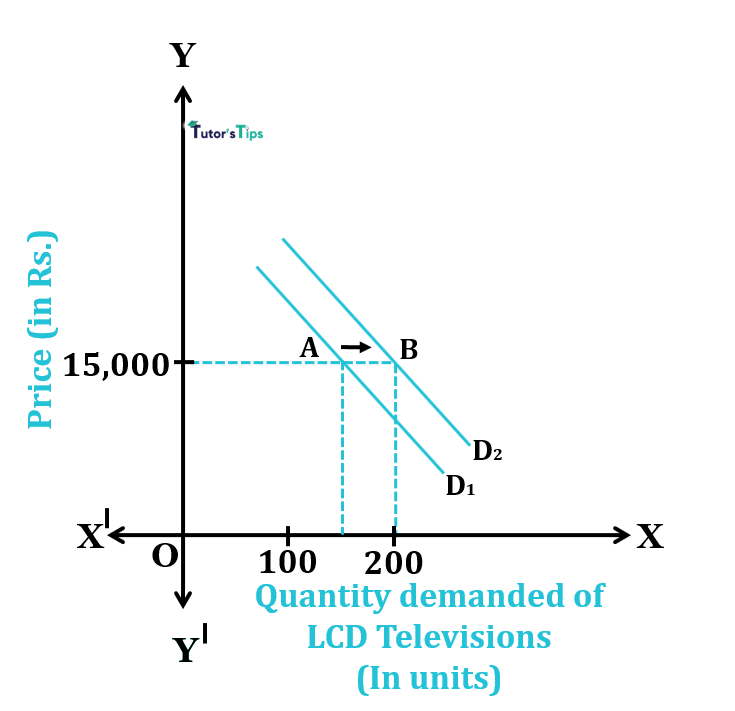
In fig, the X-axis shows the quantity demanded of LCD television n the market. And, Y-axis shows the price paid by the consumers. Here, D1 is the initial demand curve showing initial demand as 150 units. When consumers’ income in the market increases from Rs.50,000 to Rs.70,000, more will be the purchasing. Now, more consumers can afford the purchase of LCD televisions. As a result, the demand increases from 150 units to 200 units in the market. Thus, the demand curve moves to the right, from D1 to D2. In other words, it results in forwarding shift in the demand curve at a constant price of Rs.15,000.
(II) Decrease in the income:
If the income of consumers decreases assuming the price of commodity constant, the quantity demanded of normal goods decreases.
Suppose, When the consumer’s income decreases from Rs.70,000 to Rs.50,000, the consumer would reduce his consumption. This is because, now he is unable to purchase more expensive commodities such as the LCD or plasma television, branded clothes or expensive houses etc.
Advertisement-X
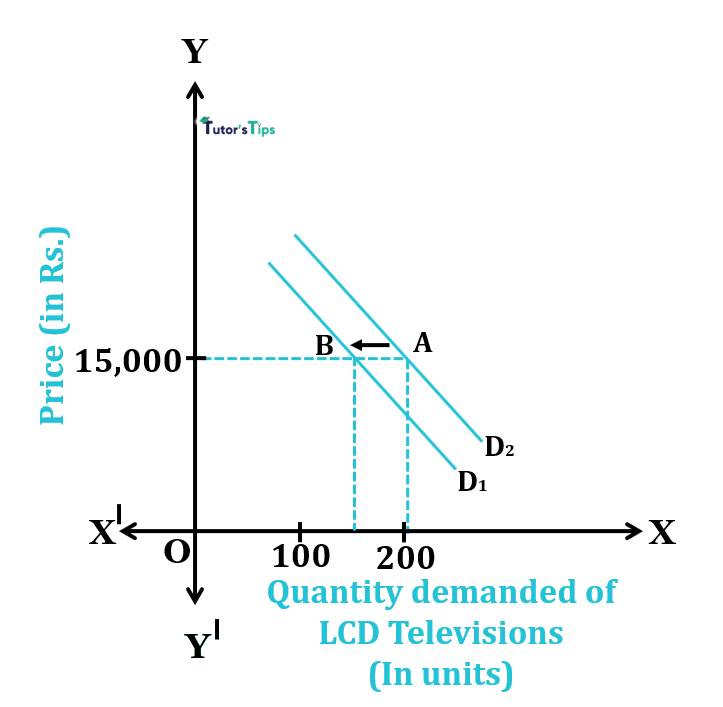
In fig, the X-axis shows the quantity demanded of LCD television in the market. And, Y-axis shows the price paid by the consumers. Here, D1 is the initial demand curve showing an initial demand of 200 units. When consumers’ income in the market decreases from Rs.70,000 to Rs.50,000, less will be the purchasing. Now, few consumers can afford the purchase of LCD televisions. As a result, the demand shrinks to 150 units. Thus, the demand curve moves to the left, from D1 to D2. In other words, it results in a backwards shift in the demand curve at a constant price Rs.15,000.
b) In case of Inferior Goods:
Inferior Goods are those for which the demand decreases with the increase in the income of the consumers and vice versa. Therefore, there is always an inverse relationship between demand and income in case of inferior goods.
This effect can be classified as:
(I) Increase in the income:
If the income of consumers increases assuming the price of commodity constant, the quantity demanded of inferior goods decreases. This is because, the consumers shift to better or superior substitutes, as they can now afford them. Therefore, the less purchasing of a commodity at a constant price shifts the demand curve to backwards. In other words, it results in a decrease in demand.
Suppose, in a market, the consumers prefer to use public transportation for travelling purposes rather than their own vehicles. If the income of the consumers increases from their initial pay to some extent, the consumers would like to travel by their own vehicles. As a result, the demand for public transportation would reduce.
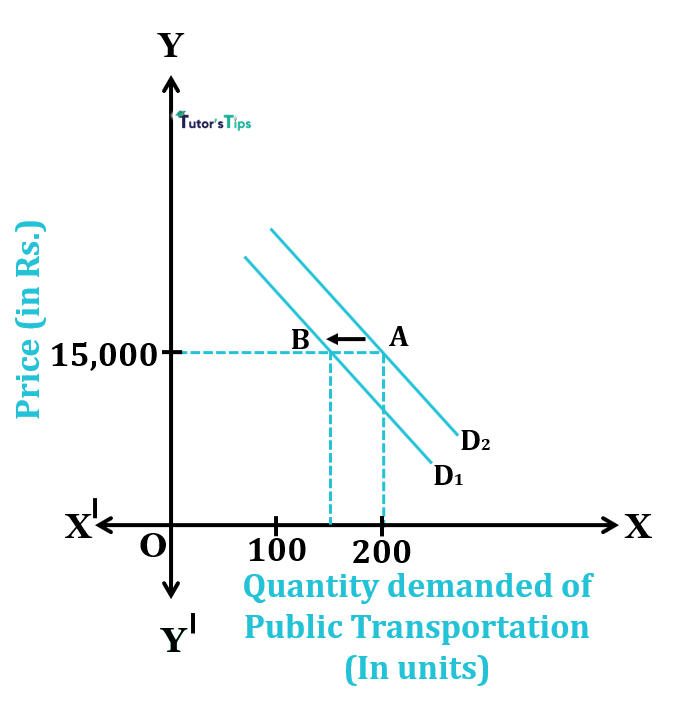
In fig, X-axis shows the demand for public transportation whereas Y-axis shows the price paid by consumers. 200 units were the initial quantity demanded when consumers’ income is Rs.50,000 at a fare of Rs.250 for a specific distance. If the income of consumers increases to extent that they can use their vehicles, the less consumption of public transportation results in a decline in demand to 150 units. As a result, the demand curve shifts to the left, from D1 to D2.
(II) Decrease in the income:
If the income of consumers decreases assuming the price of commodity constant, the quantity demanded of inferior goods increases. This is because, the consumers cut the consumption of better or superior substitutes, and buy more inferior goods. Therefore, the more purchasing of a commodity at a constant price shifts the demand curve to forwards. In other words, it results in an increase in demand.
Suppose, in a market, the consumers prefer to use their own vehicles for travelling purposes rather than public transportation. If the income of the consumers’ decreases from their initial pay to some extent, the consumers would like to travel by public transportation. As a result, the demand for public transportation would increase.
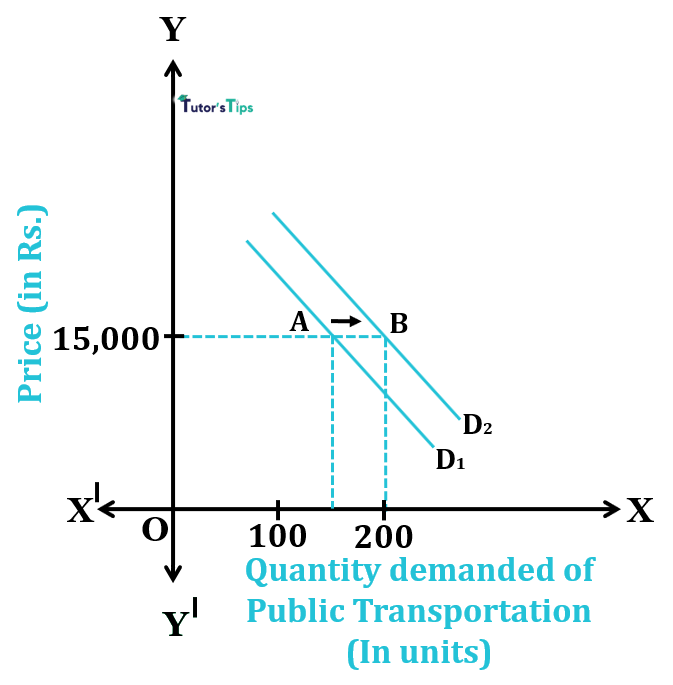
In fig, X-axis shows the demand for public transportation whereas Y-axis shows the price paid by consumers. 150 units were the initial quantity demanded when consumers’ income is Rs.70,000 at a fare of Rs.250 for a specific distance. If the income of consumers increases to extent that they shift to public transportation, the more consumption of public transportation results in an increase in demand to 200 units. As a result, the demand curve shifts to the right, from D1 to D2.
However, the goods are not always inferior or normal goods as inferior goods are normal goods for people having a low level of income. Therefore, we can say that the level of income creates the perception of goods i.e normal or inferior.
Advertisement-X
Thanks!!!
Please share with your friends
Comment if you have any question
References:
Introductory Microeconomics – Class 11 – CBSE (2020-21)

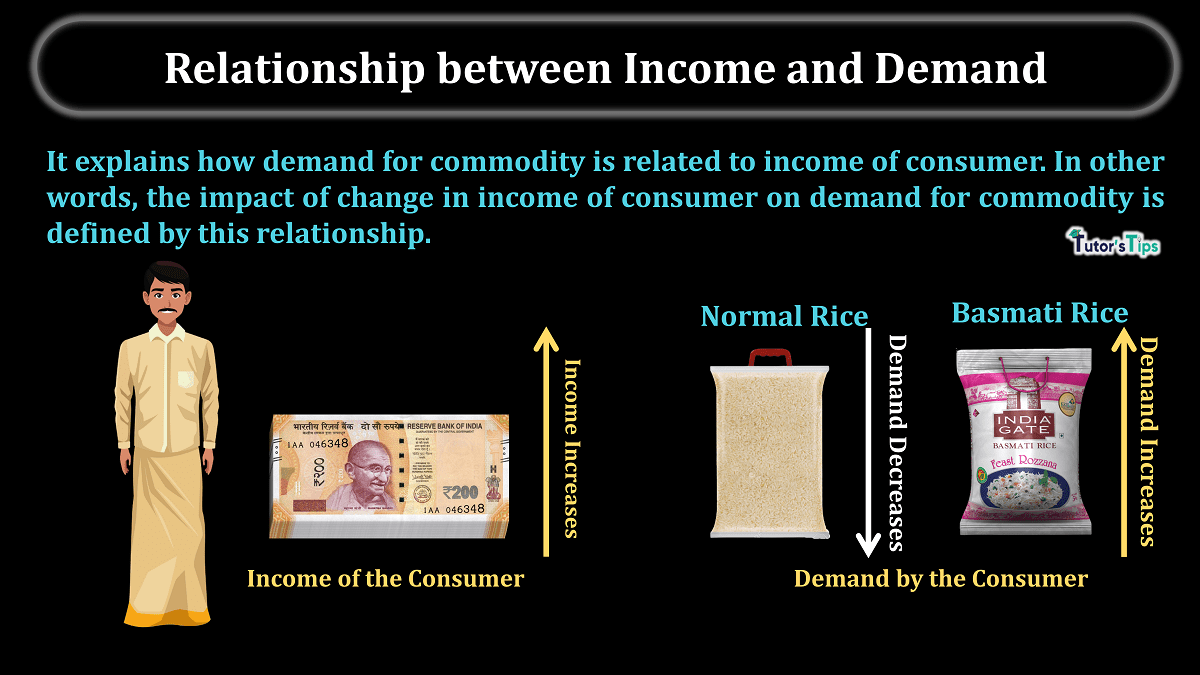
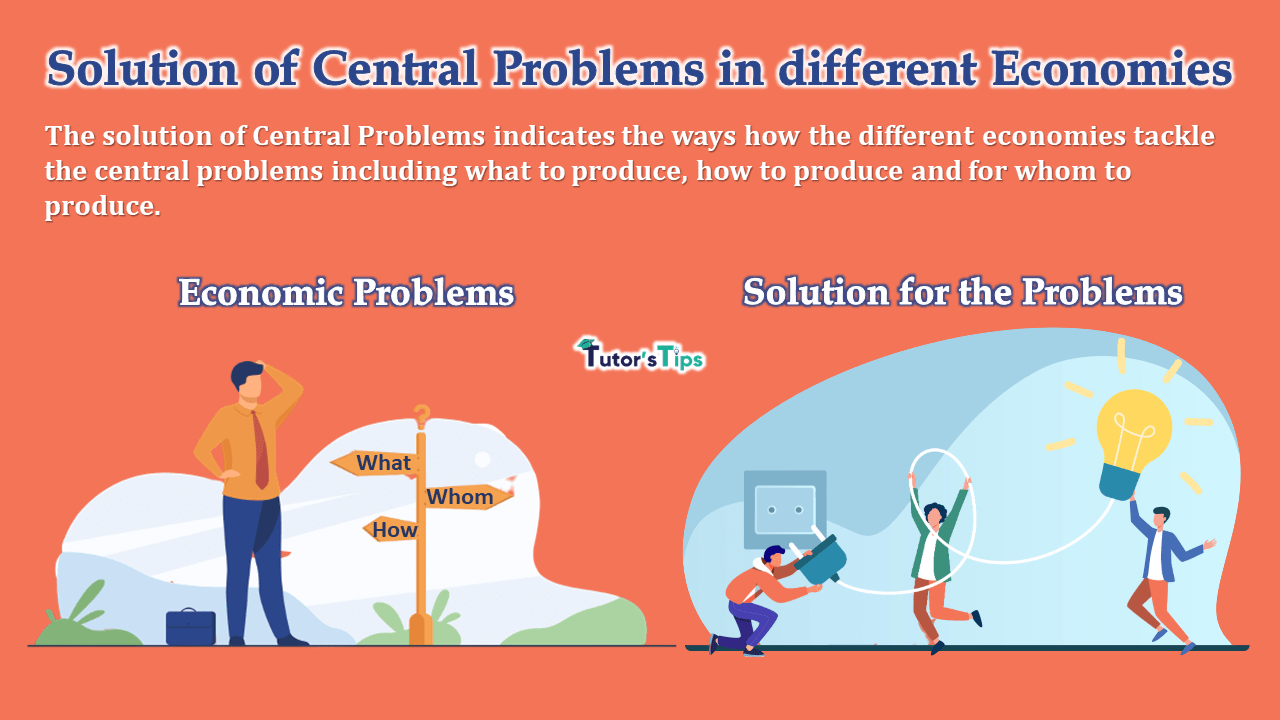

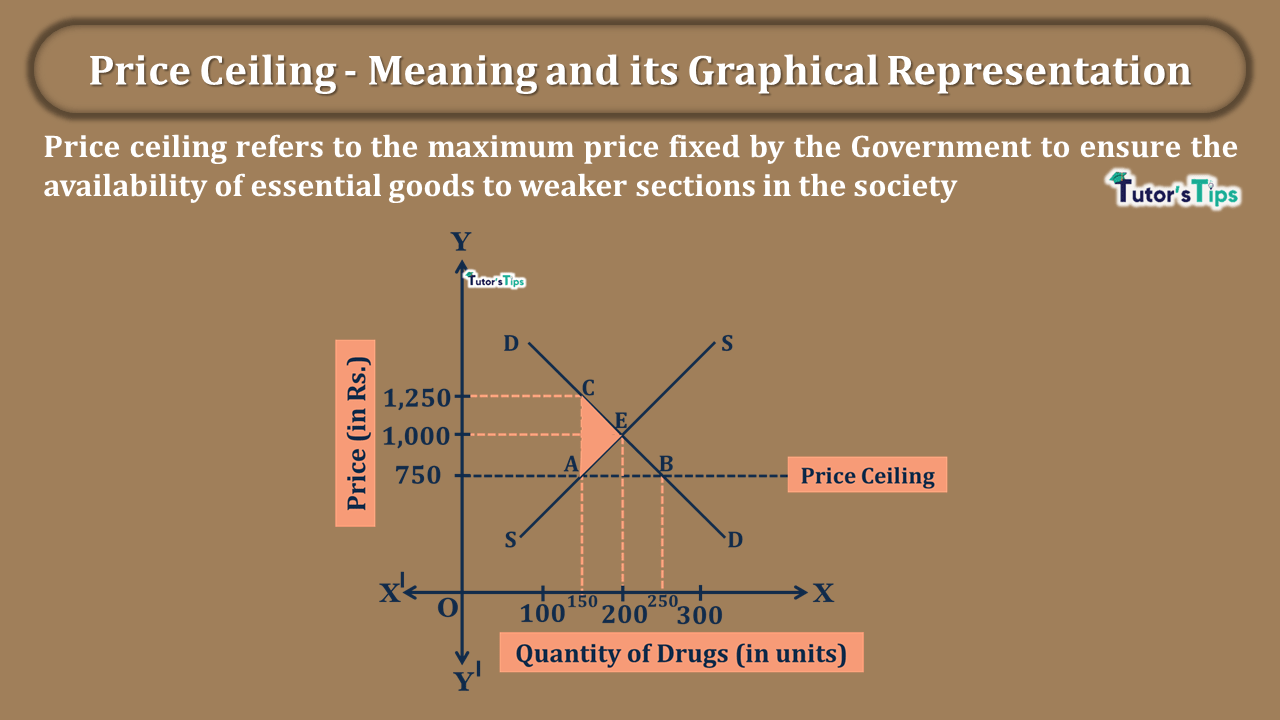


1 Comment